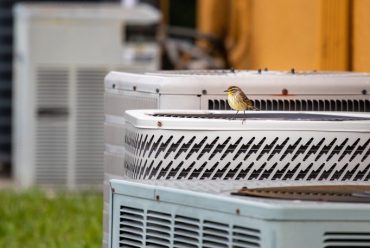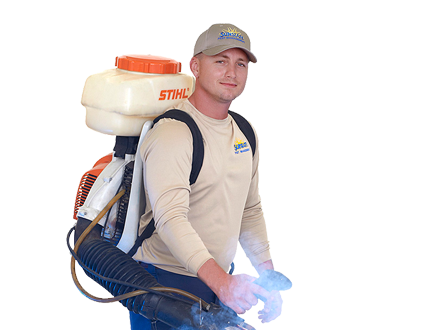

As energy costs rise and environmental concerns grow, finding ways to improve the energy efficiency of your home’s air conditioning system is more important than ever. By implementing a few smart strategies, you can reduce your energy consumption, lower your utility bills, and minimize your carbon footprint. This guide will explore various tips and techniques to enhance the efficiency of your air conditioning system and keep your home cool and comfortable during the hottest months.
One of the most effective ways to ensure your air conditioning system operates efficiently is through regular maintenance. Routine maintenance tasks include:
Changing or Cleaning Filters: Clogged or dirty filters restrict airflow, making your system work harder. Clean or replace filters every one to three months.
Inspecting and Cleaning Coils: Over time, the evaporator and condenser coils collect dirt. Clean coils ensure proper heat exchange and prevent the system from overworking.
Checking Refrigerant Levels: Insufficient refrigerant can reduce efficiency. Have a professional check and refill the refrigerant if necessary.
Tightening Electrical Connections: Loose connections can cause the system to operate inefficiently and potentially lead to system failure.
Regular professional maintenance checks can catch minor issues before they become major problems, ensuring your system runs smoothly and efficiently.
Your thermostat plays a crucial role in controlling your air conditioning system’s efficiency. Here are some tips to optimize its settings:
Set a Comfortable Temperature: Aim for a higher temperature when you’re not at home and a comfortable temperature when you are. A good rule of thumb is to set your thermostat to 78°F (25°C) when you’re home and higher when you’re away.
Use a Programmable Thermostat: Programmable thermostats automatically adjust the temperature based on your schedule, ensuring your system runs efficiently without you having to manually change settings.
Consider a Smart Thermostat: Smart thermostats learn your habits and adjust settings automatically. They can also be controlled remotely via smartphone apps, providing additional energy-saving opportunities.
Proper sealing and insulation of your home can significantly reduce the load on your air conditioning system. Here’s how:
Seal Ductwork: Leaky ducts can lead to significant energy loss. Have a professional inspect and seal your ductwork to ensure efficient airflow.
Insulate Attic and Walls: Adequate insulation prevents cool air from escaping and hot air from entering your home. Focus on insulating your attic, walls, and any exposed ductwork.
Weatherstrip Windows and Doors: Gaps around windows and doors allow cool air to escape and warm air to enter. Install weatherstripping to seal these gaps and improve energy efficiency.
Fans can complement your air conditioning system by improving airflow and making your home feel cooler without lowering the thermostat. Here’s how to use fans effectively:
Ceiling Fans: Use ceiling fans to circulate air and create a wind-chill effect. In summer, set the fan blades to spin counterclockwise to push cool air downward.
Portable Fans: Use portable fans to direct cool air where you need it most, such as in occupied rooms. This allows you to raise the thermostat setting while maintaining comfort.
Exhaust Fans: Install exhaust fans in kitchens and bathrooms to remove heat and humidity, reducing the cooling load on your air conditioning system.
Window treatments can play a significant role in reducing heat gain from the sun. Here are some tips:
Install Blinds or Shades: Close blinds or shades during the hottest part of the day to block out direct sunlight. Light-colored window treatments can reflect heat.
Use Reflective Films: Apply reflective films to windows to reduce heat gain and protect against UV rays.
Consider Window Awnings: Awnings provide shade and reduce heat gain from the sun, especially on south- and west-facing windows.
If your air conditioning system is old or inefficient, consider upgrading to a more energy-efficient model. Here’s what to look for:
High SEER Rating: The Seasonal Energy Efficiency Ratio (SEER) measures an air conditioner’s efficiency. Higher SEER ratings indicate greater efficiency. Look for units with a SEER rating of 14 or higher.
Energy Star Certification: Energy Star-certified air conditioners meet strict energy efficiency guidelines set by the U.S. Environmental Protection Agency (EPA). These units typically use 15% less energy than standard models.
Variable-Speed Technology: Air conditioners with variable-speed compressors adjust their output based on cooling demand, providing more precise temperature control and improved efficiency.
Minimizing internal heat sources can help your air conditioning system run more efficiently. Here’s how:
Limit Use of Heat-Generating Appliances: Use heat-generating appliances, such as ovens, stoves, and dryers, during cooler parts of the day. Opt for microwave ovens or outdoor grills to reduce indoor heat.
Switch to Energy-Efficient Lighting: Traditional incandescent bulbs generate a lot of heat. Replace them with energy-efficient LED bulbs, which produce less heat and consume less energy.
Turn Off Electronics: Electronics generate heat even when not in use. Turn off computers, televisions, and other devices when they’re not needed.
Your air conditioning system’s outdoor unit also requires attention to ensure efficient operation. Here are some maintenance tips:
Keep It Clean: Clear debris, leaves, and dirt from around the outdoor unit. Ensure there are at least two feet of clearance on all sides to allow proper airflow.
Shade the Unit: Provide shade for the outdoor unit without obstructing airflow. A shaded unit can operate more efficiently and reduce energy consumption.
Check for Obstructions: Ensure that the unit’s fins are straight and free of obstructions. Bent fins can restrict airflow and reduce efficiency. Use a fin comb to straighten any bent fins.
High humidity can make your home feel warmer and force your air conditioning system to work harder. Here’s how to manage humidity:
Use a Dehumidifier: A dehumidifier removes excess moisture from the air, making your home feel cooler and more comfortable. This can reduce the load on your air conditioning system.
Ventilate Properly: Ensure your home is adequately ventilated to prevent moisture build-up. Use exhaust fans in bathrooms and kitchens to remove humid air.
Zoning systems allow you to control the temperature in different areas of your home independently. This can lead to significant energy savings by cooling only the areas you use. Here’s how zoning works:
Install Dampers: Dampers are installed in the ductwork to control airflow to different zones. Each zone has its own thermostat for individual temperature control.
Use Smart Zoning Systems: Smart zoning systems use sensors and smart thermostats to optimize cooling based on occupancy and usage patterns. This can further enhance energy efficiency and comfort.
Leaky ducts can significantly reduce the efficiency of your air conditioning system by allowing cool air to escape. Regularly inspect your ductwork for leaks and seal them to improve efficiency. Here’s how:
Inspect for Leaks: Look for visible signs of leaks, such as gaps, holes, or disconnected sections of ductwork. Use a smoke pencil or incense stick to detect air leaks.
Seal Leaks with Mastic or Foil Tape: Apply mastic sealant or foil-backed tape to seal any leaks. Avoid using duct tape, as it can deteriorate over time.
Insulate Ductwork: Insulate ductwork in unconditioned spaces, such as attics or crawl spaces, to prevent heat gain or loss and improve overall efficiency.
While DIY maintenance is essential, scheduling regular professional inspections can help ensure your air conditioning system operates at peak efficiency. Here’s what to expect from a professional inspection:
Comprehensive System Check: A professional technician will inspect and tune up all components of your air conditioning system, including the compressor, evaporator coil, condenser coil, and refrigerant levels.
Identify and Address Issues: Technicians can identify and address potential issues before they become major problems, ensuring your system runs efficiently and reliably.
Optimize Performance: Professional inspections include calibrating the thermostat, checking electrical connections, and ensuring the system operates within manufacturer specifications.
Improving your air conditioning system’s energy efficiency is achievable through a combination of regular maintenance, smart thermostat settings, home sealing and insulation, and strategic use of fans and window treatments. By implementing these tips, you can enjoy a cooler, more comfortable home while reducing energy consumption and lowering your utility bills. Additionally, investing in energy-efficient equipment and scheduling professional inspections can further enhance the efficiency and longevity of your air conditioning system, providing long-term benefits for both your wallet and the environment.
